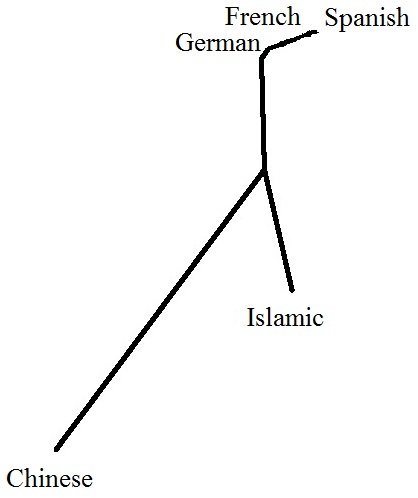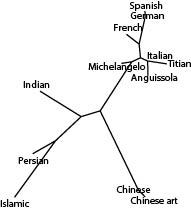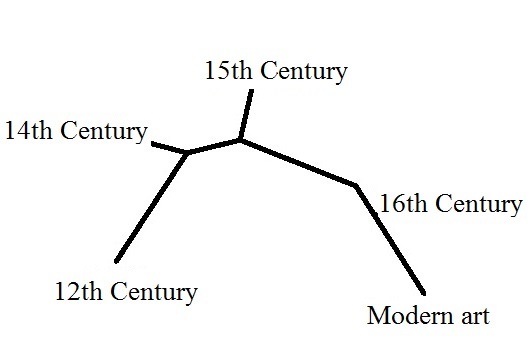Some humanities professors are extremely talented. They teach about the most fascinating creations ever made, the most brilliant artistic masterpieces ever created, the finest expression of human genius and creativity in its glory, and --somehow-- they manage to make their students hate them.
Art history, and the humanities in general, were once the highlight of most academic programs. But with the concerning recent trends in academia the popularity of core-curriculum art history courses have been decreasing gradually, and the disciplines of the humanities are no longer the centerpiece of academic education. In the engineering-oriented institute where I teach, many students do not see the relevance of art history to their major, or question the usefulness of that knowledge to their career path.
But academic education is more than just professional training, and should expand students' horizons beyond merely knowledge that has an immediate application to their first job. On the other hand, students are still not always aware of the value of art history, and more importantly, do not always enjoy the traditional lecture-centered art history teaching. The combination of the two results in student frustration and diminishing student interest, reinforcing the re-thinking of the way art history is being taught.
To make art history relevant and "cool" again, we attempted a new and rather unusual approach to art history education; we combined art history with computer science, and let the students learn art history through working on their own discovery-driven research project, using some of the most advanced computational tools that can analyze paintings. Instead of discussing painters, paintings, and artistic movements in the classroom, we start the course with a research project in which each student proposes a hypothesis related to art history. These hypotheses are chosen by the students based on their own interests, rather than dictated by the syllabus. For instance, students can choose to study whether two artists of their choice have influential links between them, identify links between geographic locations and artistic styles, profile changes in art over time, and many other creative ideas that students come up with.
Then, instead of heading to the library to spend long, strenuous hours looking for evidence in the textbooks, the students use quantitative methods to prove or disprove their hypothesis. It is remarkable that advances in artificial intelligence actually allow computers to "understand" art. By applying image analysis algorithms the students convert each painting into a set of several thousand numerical values that describe the visual content numerically. Then they apply machine learning tools to identify multidimensional patterns in the data. The results often exhibit themselves as a tree of similarities between the artistic styles, as deduced by the computer. After the computer analysis is completed, the students can go back to the textbooks to interpret and criticize their results.
For instance, the following graph was created by a group of students that tested how computers analyze the similarities between artistic styles in different parts of the world.
Their results of this simple experiment expectedly show that the artistic styles developed in the European countries is different from the Chinese and Islamic art. The German art, French art, and Spanish art are relatively similar to each other compared to their similarity to the Chinese and Islamic art. The tree was produced by the computer analysis of the visual content of the paintings alone, and without using any other information.
The combination of data collected by several students provided a more detailed tree, showing several geographic locations and a few painters. Two different students collected Chinese paintings, and the computer correctly identified the similarity between the two artistic styles, which are essentially the same. Titian, Michelangelo, and Anguissola are Italian painters, and the computer correctly placed them close to the Italian art.
Another group of students wished to test if European artistic styles in a certain century were influenced by the art of the previous century. The graph they produced provides a clear answer.
The following experiment tested influential links between painters. The computer analysis shows tight grouping of Fra Angelico and Sandro Botticelli. After a short investigation the student revealed that the two artists lived in the same city (Florence), and therefore Botticelli was probably familiar with Angelico's work, and was likely inspired by it.
The computational analysis is fairly sophisticated, but the detailed instructions make the process appropriate for first year and sophomore students, many of them are not necessarily computer science majors. With some moderate assistance from the instructors all teams are able to finish their projects and produce results. Through the process the students have the opportunity to define their own research goals, and experience art history while using state-of-the-art computational tools that change the classroom climate to something very different from the students' initial (and rather stereotypical) expectations.
This "art history lab" approach is quite different from "traditional" art history courses, centered on textbooks and classroom discussions. Classroom discussions surely take place also in our version of the course, but the origin of these discussions is not necessarily the textbook, but the results produced by the students in their experiments.
After the first time we taught the course in its new form, half of the students expressed interest in continuing their research after the semester ended, and some later presented their findings at conferences. A remarkable response given that this specific course is normally not at the top of the student's course popularity chart. It is therefore reasonable to expect that information technology-driven research-based classroom activities will become more prevalent in the future to bring new life to humanities courses, and ultimately reverse the decline of student engagement in these important disciplines.
[If you are an art/art history/computer science instructor and interested in using such experiments in your course please contact me by email to receive the software and detailed instructions].



